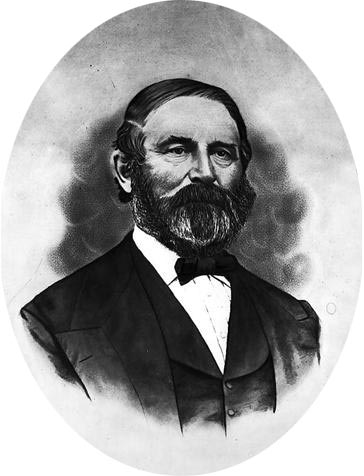 Thomas Baillie was born in Hanwell, England, in 1796. He joined the British army as a lieutenant at the age of 19, served at Waterloo, occupied Versailles after Napoleon’s roust, and served briefly in Ireland, where he made many friends. He then entered the Colonial Office with the help of his brother, who was the first clerk in the North America Department. He was appointed by the Department as Commissioner of Crown Lands and Forests, and surveyor general of New Brunswick. This was a position of great authority at the time, as he was second only to the lieutenant-governor! He had in fact, been offered a consul post in Tunis, but took the New Brunswick appointment because he preferred a temperate climate. In 1824, Thomas Baillie arrived in Fredericton with his new bride, Elizabeth, and his Irish servants.
Thomas Baillie was born in Hanwell, England, in 1796. He joined the British army as a lieutenant at the age of 19, served at Waterloo, occupied Versailles after Napoleon’s roust, and served briefly in Ireland, where he made many friends. He then entered the Colonial Office with the help of his brother, who was the first clerk in the North America Department. He was appointed by the Department as Commissioner of Crown Lands and Forests, and surveyor general of New Brunswick. This was a position of great authority at the time, as he was second only to the lieutenant-governor! He had in fact, been offered a consul post in Tunis, but took the New Brunswick appointment because he preferred a temperate climate. In 1824, Thomas Baillie arrived in Fredericton with his new bride, Elizabeth, and his Irish servants.
In 1825, Mr. Baillie petitioned for, and, was granted 500 acres in the Parish of Kingsclear. This consisted of two 200 acre and one 100 acre parcels, and later 200 acres more.
He named the settlement Hanwell, after his home town. He later petitioned for a good road to be built from Fredericton, which of course, became known as Hanwell Road. He also obtained several islands in the St. John River, as well as land at the Richibucto River, and in Fredericton.
As Commissioner, he was responsible for regulating and taxing the cutting, and sale of timber in the province. In 1829, the British government set out to reorganize the timber trade, and authorized the sale of large amounts of Crown Land, in order to provide homes for settlers. This was embraced by Baillie, who obtained substantial revenues from the sales for the province’s coffers. In fact, from then until 1846, he helped many Irish and other immigrant people settle in the area (the McSweeney’s, DeCauslins, Welchs, Slavin, Lawlor, McEwing, and others).
In 1851, after a term in the NB legislature, Thomas Baillie retired to England. After his departure, Hanwell obtained a Post Office, and by 1866, Hanwell had become a farming community with 52 families. In 1871, the community and surrounding district had a population of 300.
The original land grants from Eaglewood south, toward the S-curve, have the names, Hon. Thomas Baillie, Rainsford, Smith, Willox, Holbrook, Killeen, Taylor, Roan and Beckwithp. To the north, the land grants have the names, Frink, Plummer, Hon. Isaac Allen, Hon. George Ludlow, Thompson, and Robinson.
(Many thanks go to Mr. William Vinh-Doyle, at the Provincial Archives, for his invaluable help in obtaining some of this information, as well as access to the 1851 census records.)
